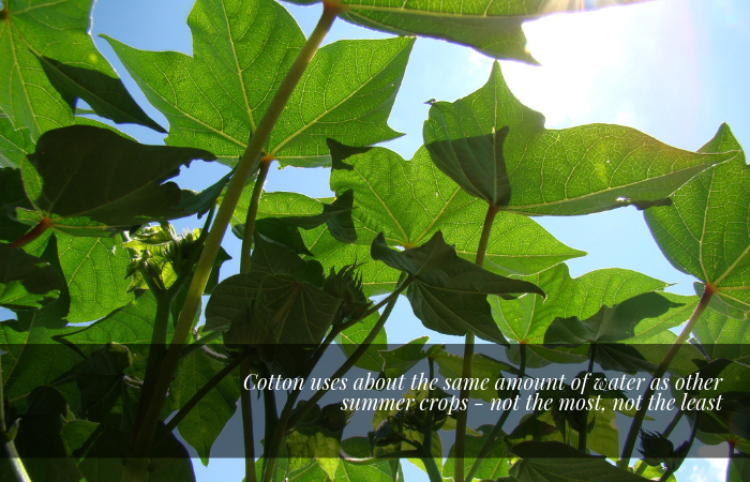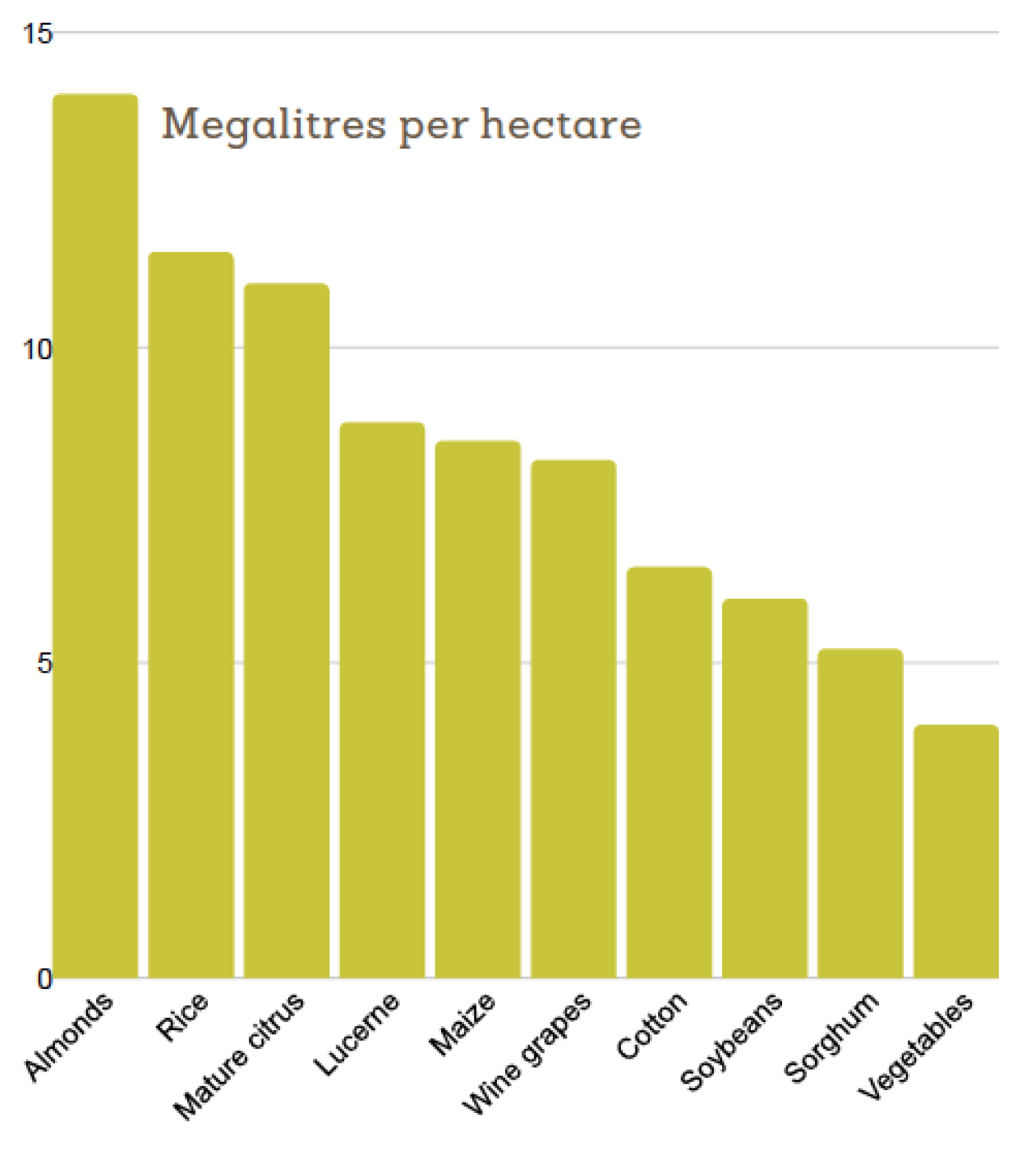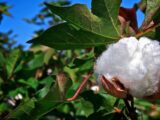
You may have read that cotton is a "thirsty crop"- it's a common phrase that's been used over and over again over many decades, and is simply not the case. Cotton is a desert plant that requires similar amounts of water per hectare to other summer crops planted in the same regions. In fact cotton uses a lot less water than many other summer crops. Rather than being "thirsty" cotton is well-adapted to surviving and producing a crop in hot and dry conditions.
Cotton is an ideal crop to grow in the boom and bust river systems found in Australia. That’s because it’s planted once a year, and is only planted when there’s enough water available. Put simply, when there’s limited water there’s limited cotton. This is different to ‘permanent’ plantings such as grapes and fruit trees that need water to survive every year, whether it’s available or not.
The table below shows the amount of water per hectare required to grow a variety of summer crops grown in the Murray-Darling Basin.

Sources: Australian Almond Board, 2016, Water Use on Australian Farms, 2016-17 (NSW data), NSW Dept of Primary Industries 2018 (for Sunrasia and Riverland areas), GRDC Maize Grow Notes 2014, NSW DPI Farm Enterprise Budget Series, Central and Southern Zone 2012, Crop and Pasture Science 2013 (a peer-reviewed, 23 year review of cotton’s seasonal water use), WATERpak — CRDC 2012, Assessing Yield Water Use Efficiency in the Murray Valley and Riverina Wine Regions 2012/13






